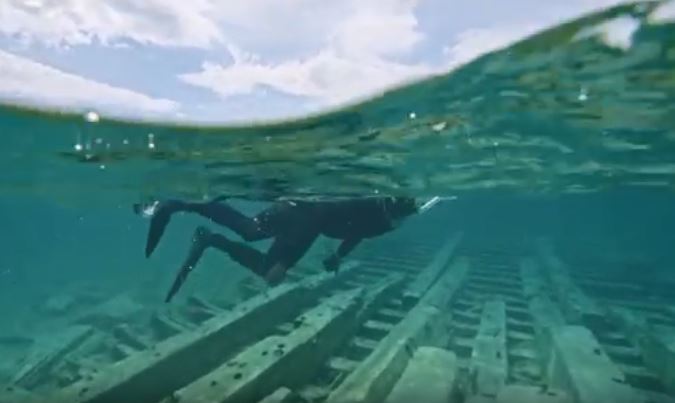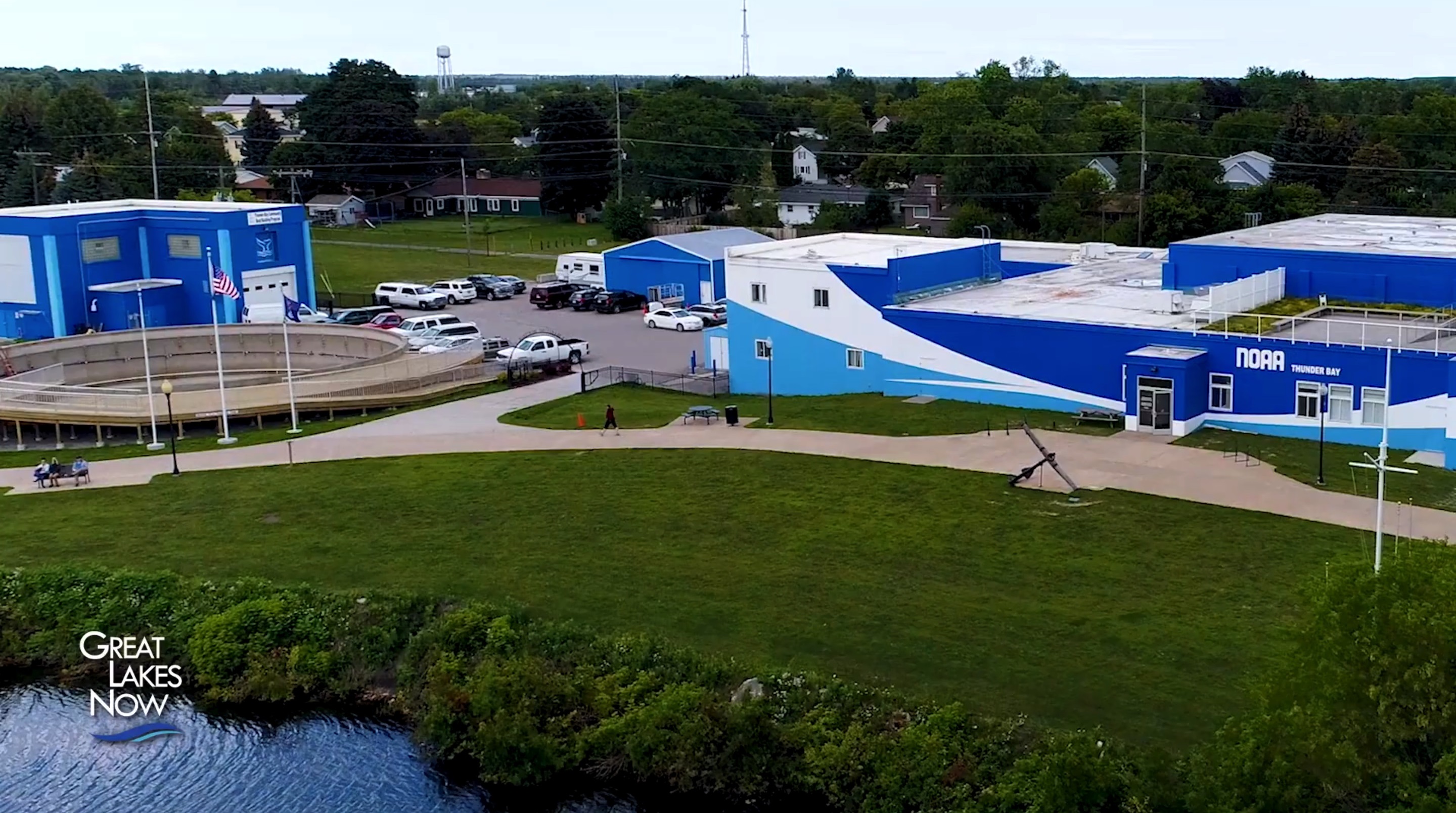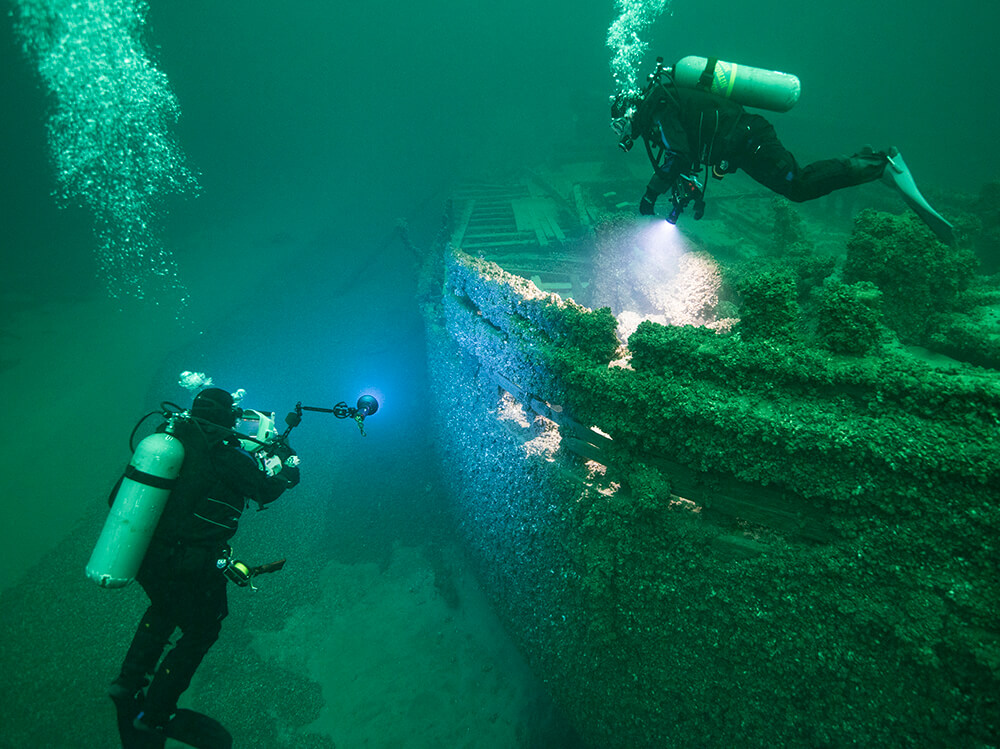
Growing up in Alpena, Audrey Garant could not wait to leave her hometown in Michigan’s northeast Lower Peninsula. But years later, moving back, seeing the Great Lakes Maritime Heritage Center built and getting to experience it changed things for her.
“It’s my place to kind of disappear,” she said. “I feel like I’m transported to another place when I go there and just walk in through the door. Most of my friends at this point or relatives don’t have little kids, but they still enjoy the display that mimics a shipwreck and just honestly walking around and reading about the shipwrecks.”
But what really solidified her appreciation for the Thunder Bay National Marine Sanctuary was the changes it brought to Alpena. Conversing with a stranger in a brewery, she found out he was from Wisconsin and came to Alpena to scuba dive. He had done dives all over the world and could not wait to come back to Alpena.
“I just thought, ‘Wow, we are a tourist attraction,’ and growing up no one ever thought Alpena was a tourist attraction,” she said. “That was for Traverse City, not Alpena.”
Before COVID-19 hit, the Thunder Bay National Marine Sanctuary was a popular tourist hub. The visitor’s center in downtown Alpena saw nearly 100,000 guests a year, spanning locals, regional visitors as well as international ones, according to Stephanie Gandulla, maritime archaeologist and research coordinator at Thunder Bay National Marine Sanctuary.

NOAA Thunder Bay National Marine Sanctuary (Photo courtesy of NOAA Office of National Marine Sanctuaries)
For visitors into the water itself, numbers are not tracked, so it’s hard to say if there’s been an increase or decrease in the number of divers during the pandemic period. But the demand is there.
“I would say when we were a little bit delayed in getting the sanctuary shipwreck mooring buoys and couldn’t get them all out there, we got people calling asking about the buoys, so we know they were being used,” Gandulla said.
For a long time, Thunder Bay stood alone amongst the National Oceanic and Atmospheric Administration’s marine sanctuaries. The process for designating a national marine sanctuary is not a quick one.
But more than 20 years after it was designated as the first national marine sanctuary in the Great Lakes, Thunder Bay will be joined by at least two more.
“Typically, it takes several years to get a sanctuary designated,” said Ellen Brody, Great Lakes regional coordinator for the NOAA Office of National Marine Sanctuaries.
Currently there are 14 designations spread around U.S. waters. Two designations are in progress, in lakes Ontario and Michigan. Five more nominations are in inventory for consideration, one of which is in Lake Erie. And one nomination is under review, in Lake Superior.
Lake Ontario
The Lake Ontario proposed sanctuary is currently seeing a lot of action. NOAA is at the point in the process where it is putting together an environmental impact statement for the sanctuary. That statement document will then be put forward for public comment.
“It takes us about a year to publish a final environmental impact statement, and then at that point it would become a designated sanctuary,” Brody said.
The main thing that has yet to be settled for the Lake Ontario sanctuary is its geographic scope. The original proposal was for eastern Lake Ontario only, but the proposal will now include a portion of the St. Lawrence River, primarily the Thousand Islands region, as an alternative for the public to consider.
“Basically, it’s what does the public want? Eastern Ontario only, or do they want eastern Lake Ontario and Thousand Islands,” Brody said.
The goal is to have the EIS published this summer, according to Brody.
But while it isn’t time for public comment for the final EIS yet, that doesn’t mean the public can’t already get involved in the process.
The advisory council for the Lake Ontario sanctuary has been holding regular virtual meetings that are also open to the public. The next meeting will be on April 29 at 6 p.m. and can be accessed by a link on NOAA’s website here. Otherwise, comments can be sent to lakeontario@noaa.gov.

Two divers shine lights on the St. Peter shipwreck in Lake Ontario (Photo Credit: NOAA)
Wisconsin Shipwreck Coast National Marine Sanctuary
Even further along than the Lake Ontario sanctuary is the Wisconsin Shipwreck Coast National Marine Sanctuary. The final EIS for that sanctuary was published in June.
“We’re just waiting to publish our final rule, which is the actual designation,” Brody said. “We need to have the rule before it’s designated, and that is going through our Department of Commerce clearance process.”
That should happen any day now, according to Brody.
Lake Erie Quadrangle
Anyone paying attention to this designation might have noticed a press release announcing the maintenance of the Lake Erie sanctuary nomination.
“When we put sites in inventory, we do it for a five-year period,” Brody said. “With the idea being that we’re not sure we want to keep sites on forever, because there might be changes in support or we just wanted to keep updated. So for Lake Erie, we just maintained that site in our inventory, so it will be on there for another five years, which in essence means it’s eligible to become a sanctuary should NOAA take that next step.”
NOAA has no plans to take that step currently, Brody said.
“Natural resources abound in Erie County, but Lake Erie is our largest and greatest asset impacting people who visit, live, work, learn and play here,” Erie County Executive Kathy Dahlkemper said in a statement. “I’m thrilled our nomination will remain under consideration because long-term, comprehensive conservation of this Great Lake is critical for our economy to thrive today and for future generations. We must act as responsible stewards of this special resource.”
Whitefish Point, Lake Superior
The last of the possible Great Lakes sanctuaries is a nomination submitted for Lake Superior off Whitefish Point. NOAA is currently reviewing that nomination and will decide whether or not to include it in its inventory.
“For the longest time, Thunder Bay was the only sanctuary,” Brody said. “So the possibility of having two more designated sanctuaries, so now we’ll have three of the five Great Lakes, I think is really significant. We can connect communities, we can tell the maritime heritage story better from our program, so I’m really excited about looking at more sanctuaries on the Great Lakes.”
Having more sanctuaries can only be a good thing, Gandulla said as well.
“There are important resources in all the lakes,” she said. “And when we highlight it here (in Lake Huron), it helps protect the resources in Lake Ontario, and if you highlight it in Lake Ontario, it helps protect the resources here.”
Catch more news on Great Lakes Now:
The Age of Nature: Humanity’s relationship with nature in the Great Lakes region and beyond
Shipwreck Life: How fish and other aquatic species utilize Great Lakes shipwrecks
API key not valid. Please pass a valid API key.Featured image: NOAA Thunder Bay National Marine Sanctuary (Photo courtesy of NOAA Office of National Marine Sanctuaries)




